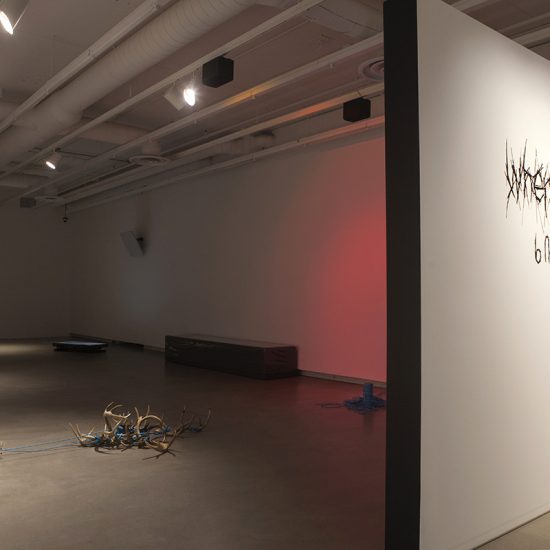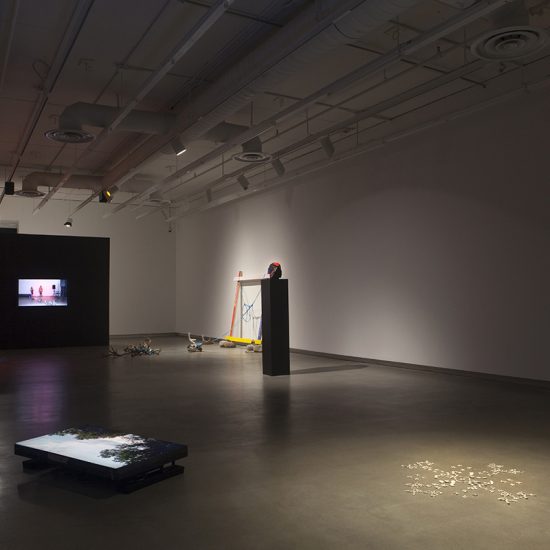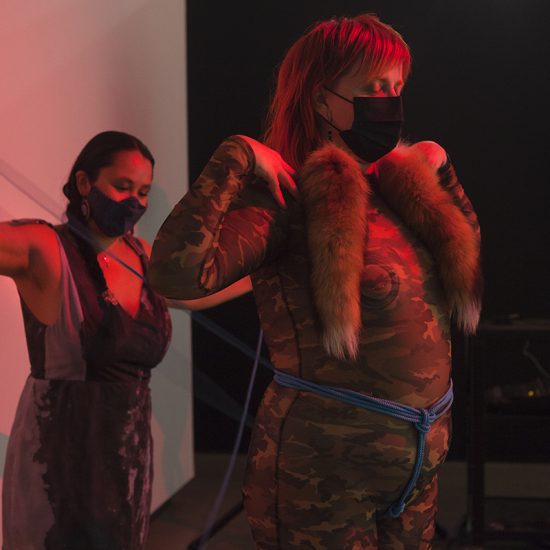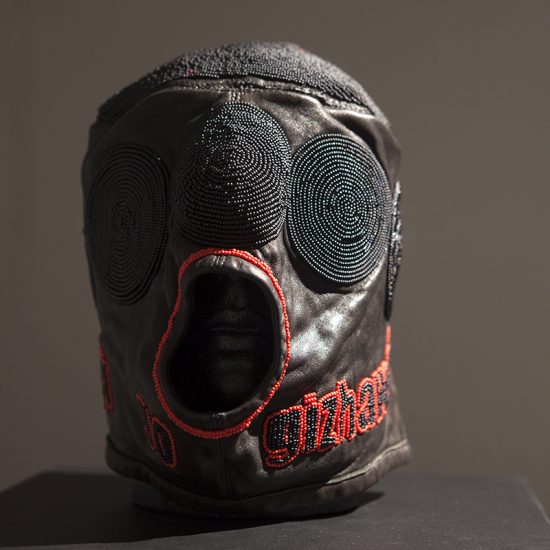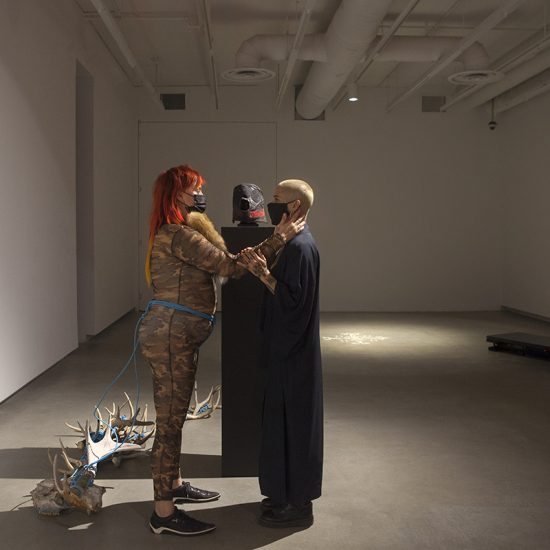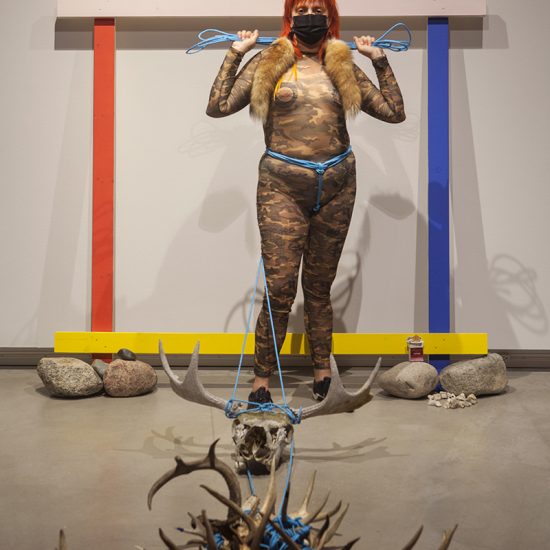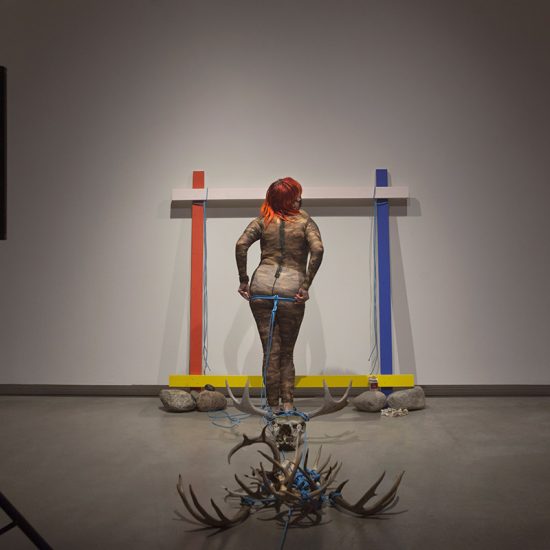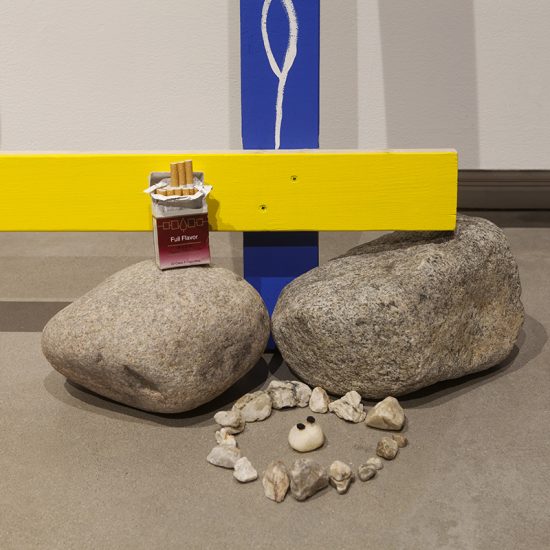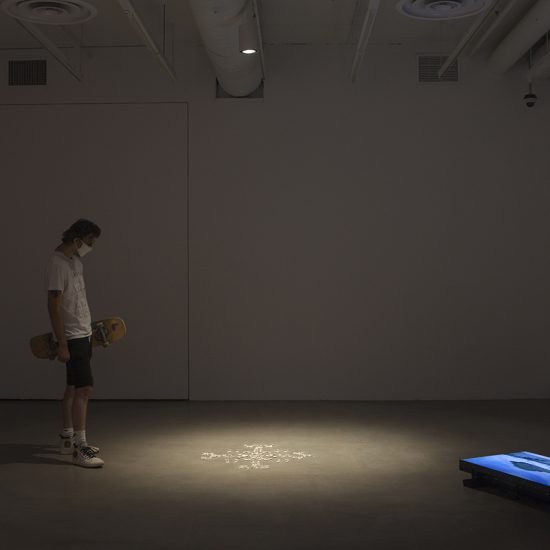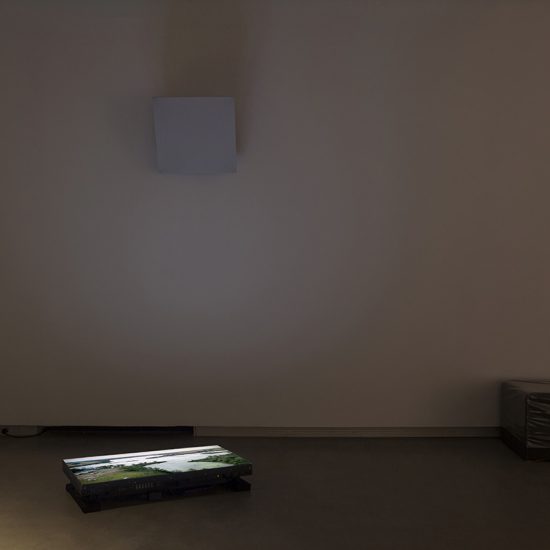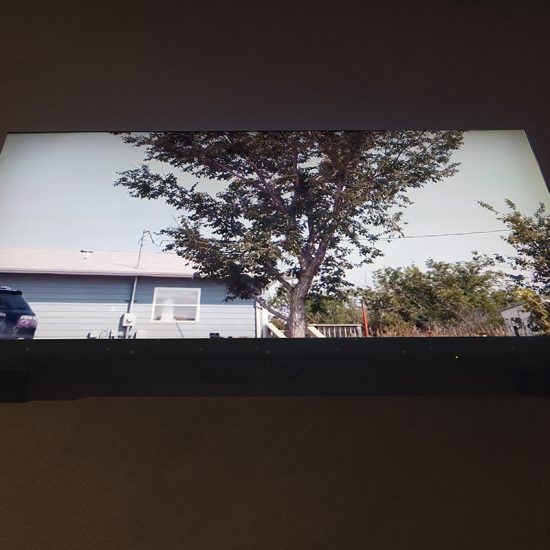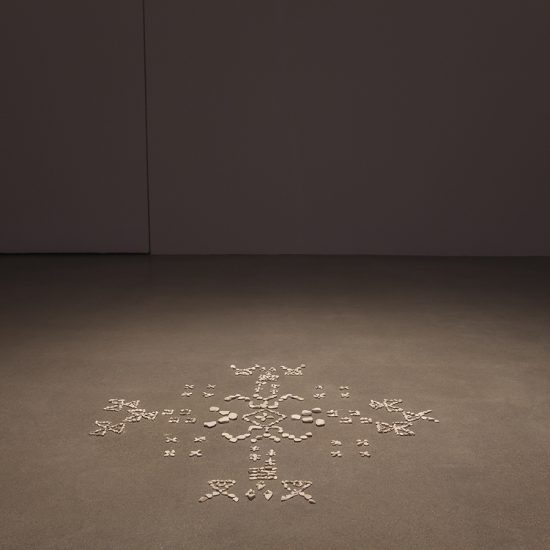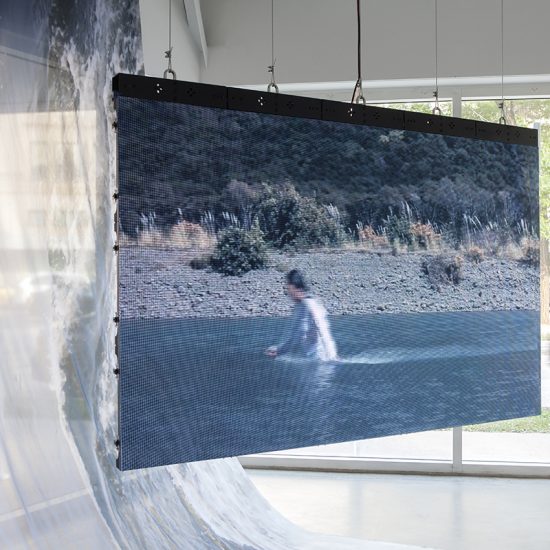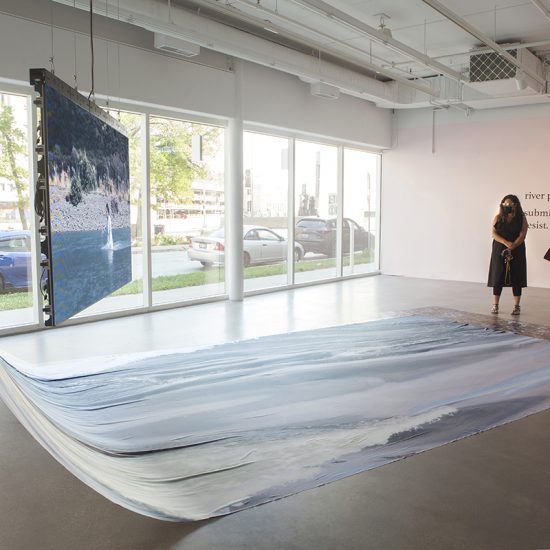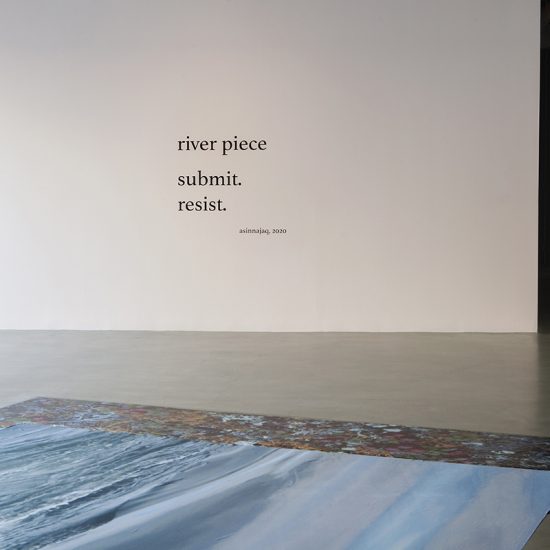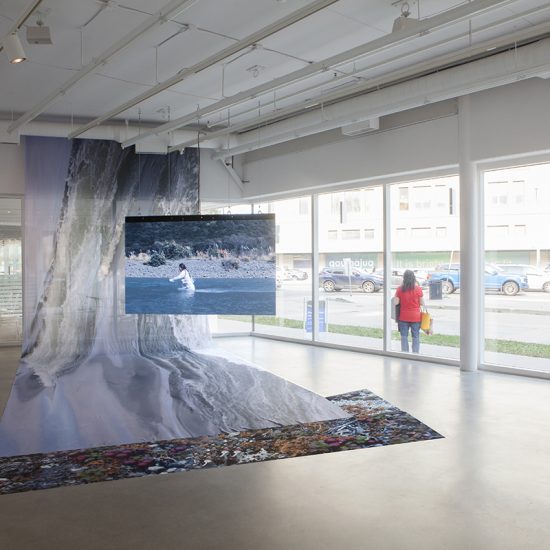
When Veins Meet Like Rivers; ᑲᑎᓐᓂᖅ / okhížata / maadawaan
An exhibition featuring asinnajaq, Kite, and Dayna Danger
August 21 – December 17, 2021
Plug In Institute of Contemporary Art | 1, 460 Portage Ave | Winnipeg MB | Canada
Plug In Institute of Contemporary Art is honoured to announce When Veins Meet Like Rivers; ᑲᑎᓐᓂᖅ / okhížata / maadawaan an exhibition featuring asinnajaq, Kite and Dayna Danger, which will take place in our galleries from August 21 until December 17, 2021.
Submit. Resist. Care. Heal.
Sharing and being transparent was the starting point of the work and always offering what felt true. Traditionalists might balk at the lack of formal evidence, but the silence was the language of trust the 4 of us worked in. The ability to reveal, hold, know and create while being in remote orbit. Constant care and consideration.
– Allison Yearwood, Curatorial collaborator and Executive Director of Plug In Institute of Contemporary Art
Exhibition essay by Adrienne Huard
The meeting of two rivers, the Red and the Assiniboine, remained central to the formation of Winnipeg. The Forks, or rather, Nestawaya, has been a place for trade and gathering for Indigenous networks, and subsequently, settler traders for over 6,000 years. ‘When Veins Meet Like Rivers’ embodies the convergence of Indigenous nations coming together through the artworks of Oglála Lakóhta artist, Kite, Inuk filmmaker, asinnajaq, and Métis/Saulteaux/Polish artist, Dayna Danger. Through these pieces, they call and respond to one another, sharing an intimate bond that replicates the group’s ongoing constellations of kinship. Communicating through variations of sound, the frequencies of these artworks flow through each other while surpassing physical connection.
They share reverence for the Land and non-human relatives by conveying the interconnectedness of rivers, stones, pathways, and shores, uniting their forms of relationality through these entities. asinnajaq’s installation, ‘Cradling River Piece’ (2021) displays a video performance by the artist on a hanging screen, challenging and accepting the river’s current, as a fabric waterfall spills onto a bed of cranberries on the floor. The sound score titled, Submit and Resist, speaks to the delicate balance of fighting or giving in to something and how the water and Land emulates that. By using sound and frequency, the artwork calls to the other pieces in the exhibition, spurring energetic communication while engaging with each other’s presences. Danger’s performance piece and remaining ephemera titled, ‘to submit, to resist, to submit, to resist.’ (2021), responds to this frequency by using songs, drumming and the soothing sounds of a rushing river. Their work honours the four directions while questioning accessibility of spaces and how we position ourselves in relation to the sun rise and sun set. They set a precedent on consensual and reciprocal relationships within these environments. Meanwhile, in Kite’s installation, ‘Iron Road’ (2021), she tells a visual story of a prominent piece of her family history: her great-great-great grandmother who escaped the Wounded Knee massacre on foot. Using drone footage of her family‘s trust land, layered with thunderstorm imagery and Lakota symbols, Kite’s artwork responds to Danger and asinnajaq’s pieces while demonstrating the significance of collaborative storytelling, dreams and language in conjunction with the importance of the Land that carries us. Collectively, the group signals to profound care while maintaining dialogue with one another through sound, song, story and language.The title of the exhibition not only pertains to Nestawaya as a place of gathering and knowledge exchange, but it also points to the ways these artists physically put their bodies into their artworks. The interconnectedness of these pieces links their physical and spiritual affiliation for one another, like veins that flow between each other. It signals to the lives that continue to flourish despite carry- ing the weight of colonial trauma. And while their ancestors come from different nations, they are all experiencing the same detrimental symptoms of settler colonialism; however, the trauma is not what bonds them. Instead, they simultaneously present imagery of rocks along shores and pathways that represent their generational ties. The river represents veins that are very much alive and still flowing, acknowledging the strength of past and future ancestors.In conversation with the artists, they all agreed that ‘When Veins Meet Like Rivers’ goes further than solely participating in a group exhibition—it’s a meeting space that signifies years of growing alongside one another. It demonstrates intimacy through visual ties while finding ways to support each other through grief and colonial trauma. It is the physical and spiritual responding and calling to one another. It’s the “behind the scenes” of checking in and sharing, of maintaining fruitful kinship that feeds everyone and the gifts they bring to this world. It defies Western individualist ideologies and rather, carves space for each other, visually and spiritually, encouraging their own Indigenous cosmologies that facilitates profound relationality. This exhibition enables a gathering space that visually feeds visitors, inviting them to witness and participate in an environment that harbours relationality between human and non-human kin through frequency, sound exchange, song and language.
asinnajaq is a visual artist, filmmaker, writer and curator based in Montreal, QC. asinnajaq’s practice is grounded in research and collaboration, which includes working with other artists, friends and family. In 2016 she worked with the National Film Board of Canada’s archive to source historical and contemporary Inuit films and colonial representations of Inuit in film. The footage she pulled is included in her short film “Three Thousand.” The film was nominated for Best Short Documentary at the 2018 Canadian Screen Awards by the Academy of Canadian Cinema & Television. asinnajaq was a part of the curatorial team for the Canadian Pavilion at the 2019 Venice Biennale and was long listed for the prestigious Sobey Art Award in April 2020.
Dayna Danger is a 2Spirit/Queer, Metis/Saulteaux/Polish visual artist raised in so called Winnipeg, MB. Using photography, sculpture, performance and video, Dayna Danger‘s practice questions the line between empowerment and objectification by claiming space with their larger than life scale work. Danger’s current use of BDSM and beading leather fetish masks explores the complicated dynamics of sexuality, gender, and power in a consensual and feminist manner. Danger is currently based in Tio’tia:ke. Danger holds a MFA in Photography from Concordia University. Danger has exhibited work in Santa Fe, Winnipeg, Ottawa, Montreal, Peterborough, North Bay, Vancouver, Edmonton and Banff. Danger currently serves as a board member for the Aboriginal Curatorial Collective (ACC/CCA).
Kite aka Suzanne Kite is an Oglála Lakȟóta performance artist, visual artist, and composer raised in Southern California, with a BFA from CalArts in music composition, an MFA from Bard College’s Milton Avery Graduate School, and is a PhD candidate at Concordia University. Kite’s scholarship and practice highlight contemporary Lakota epistemologies through research-creation, computational media, and performance. Her performances, compositions, sculptures and sound installations showcase the use of experimentation in new media and digital technologies that touch on issues such as nonhuman and human intelligence, the ethics of extractive technologies, and software design. Recently, Kite has been developing a body interface for movement performances, carbon fibre sculptures, immersive video and sound installations, as well as co-running the experimental electronic imprint, Unheard Records. For the inaugural 2019 Toronto Art Biennial, Kite, with Althea Thauberger, produced an installation, Call to Arms, which features audio and video recordings of their rehearsals with Her Majesty’s Canadian Ship (HMCS) York, which also consisted of a live performance with the conch shell sextet, who played the four musical scores composed by Kite. Kite has also published extensively in several journals and magazines, including in The Journal of Design and Science (MIT Press), where the award winning article, “Making Kin with Machines,” co-authored with Jason Lewis, Noelani Arista, and Archer Pechawis, was featured. Currently, she is a 2019 Pierre Elliott Trudeau Foundation Scholar and a Research Assistant for the Initiative for Indigenous Futures.
Opening Hours and Procedures
Plug In ICA will be open by appointment starting Saturday, August 21. Appointments will be available during gallery hours: Tuesday, Wednesday, Friday 12 – 6 pm; Thursday 12 – 8 pm; and Saturday 12 – 5 pm.
At this time we ask visitors to continue to wear masks in our space, maintain physical distancing and stay home if displaying COVID-19 symptoms. For the safety of everyone in our space, we also request visitors to be fully vaccinated to attend the exhibition. Vaccination status can be provided ahead of your visit by sharing an image (e.g. screenshot) of your immunization card QR code in your reply email or upon arrival by showing your physical or digital vaccination card to gallery staff. Children under the age of 12 may visit Plug In ICA with a fully vaccinated member of the same household.
Please book through our online booking system, email info@plugin.org or call 204-942-1043 to make your appointment today.
Please note, our online shop is open and curbside pickup is available.
Acknowledgments
We are on Treaty 1 Territory. Plug In ICA is located on the territories of the Anishinaabeg, Cree, Oji-Cree, Dakota, and Dene peoples, and the homeland of the Métis Nation.
Plug In ICA extends our heartfelt gratitude to the artists we work with, our generous donors, valued members, and dedicated volunteers. We acknowledge the sustaining support of our Director’s Circle. You all make a difference.
We gratefully acknowledge the support of the Canada Council, the Manitoba Arts Council and Winnipeg Arts Council. We could not operate without their continued financial investment and lobbying efforts. For this exhibition we would like to acknowledge the generous support of Manitoba 150.
Plug In ICA relies on community support to remain free and accessible to all, and enable us to continue to present excellent programs. Please consider becoming a member of Plug In ICA and a donor at https://plugin.org/support or by contacting Angela Forget at angela@plugin.org.
For more information on public programming and exhibitions contact Luther Konadu at luther@plugin.org.
For general information, please contact: info@plugin.org or call 1.204.942.1043



